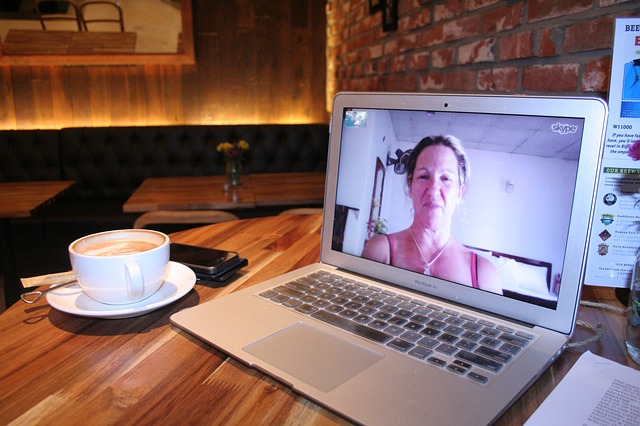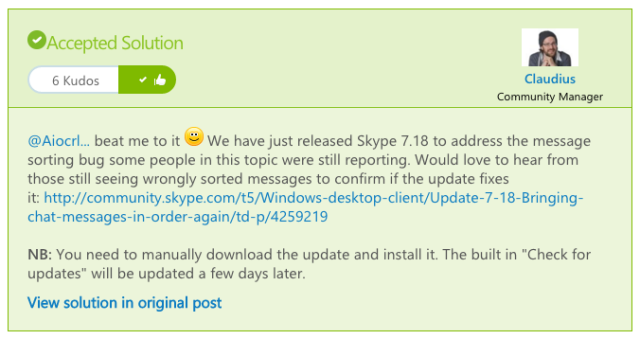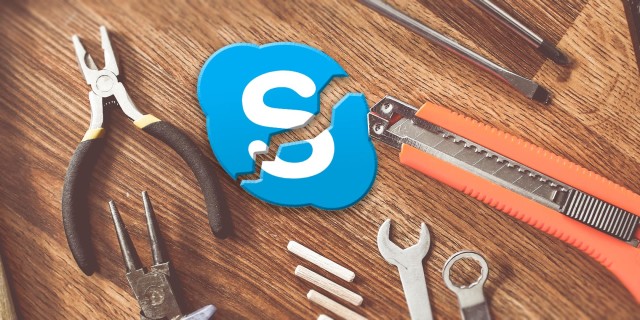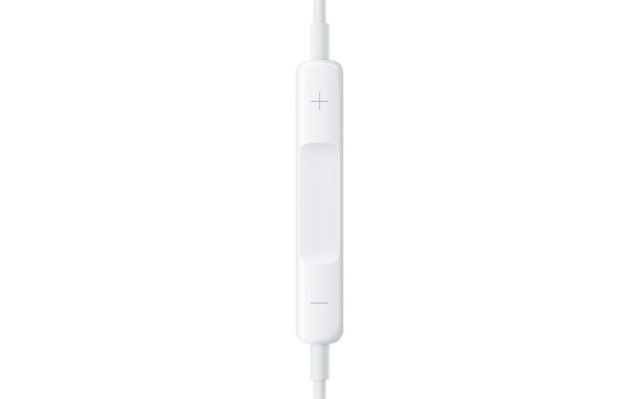

When Microsoft bought Skype back in 2011, a collective groan could be heard around the Internet. A beautifully made product, constructed by a dedicated team from Sweden, Denmark, and Estonia, was now being taken over by the Redmond giant; the same beast that tried to force the worst browser ever on us.
The seeds for the total meltdown of Skype were born. The transition has been bumpy, but certainly smoother than expected. With the latest Skype update, it looked as if the world’s most well-known VOIP was stuttering once again.
After the Skype update to version 7.17.0.105, when two people were having an instant chat conversation on the Windows desktop version of Skype, the messages would appear out of order. Seeing the messages of a long conversation all over the place would get annoying really quickly.

But what is really strange is that if you then closed the chat window and reopened it, the messages would be back in their correct order.
The second problem was that read messages were staying marked as unread, despite clicking on them several times. This meant that the bouncing number on the Skype icon which indicates how many read messages you have, refused to clear (as well as the dots that sit in every unread chat message).

The only way to mark them as read was to go to the Skype contact list, right-click on the contact’s name, and choose “Mark Conversation as Read”. Moreover, clicking this menu option didn’t do anything the first time around; the messages only became unread after clicking the menu option 2 or 3 times. For someone having many or drawn-out conversations, this would become very tedious very fast.
The Skype forums quickly filled up with angry users describing the problem and demanding that Skype do something. But what was Microsoft/Skype’s solution to the problem? Was it to work around the clock on very little sleep and lots of caffeine to find a patch, while listening to “Eye Of The Tiger” for inspiration? No, not exactly. Their solution swas for users “to downgrade” to the previous version until they could figure out what was going on.
The new patch finally came out, and apart from one or two blips, it seems to be holding so far. But the advice to downgrade? That was a bit embarrassing Microsoft.

Right now you’re probably thinking “OK, they screwed up, happens to the best of us, it’s fixed now. So what’s the big deal?” Well the big deal is that this is not an isolated incident.
Since Microsoft took over Skype 5 years ago, we have had one technical SNAFU after the other. Which is bad because everyone has Skype in their lives so much that when it goes down, everyone plunges into mourning. It’s the same when Facebook goes down – “Facebook is DOWN! What will we DO now?“.
Skype is used for keeping in touch with loved ones, but it is also used by people in companies, and self-employed workers. When Skype sneezes, it’s the users who hold the collective tissue to sneeze, too. I rely on Skype for my business. So do tens of millions of other people.
You will constantly experience this problem if you use multiple devices, and especially if you use different platforms. For example, I use Skype on a Windows PC, a Macbook, an iPad, and an iPhone (and it always stays open). So I am constantly starting a conversation on one, and continuing it on another. You would assume that the messages would update on each device instantly. You would assume wrong.

If I stop an instant messaging conversation on my MacBook and move to my iPhone, because I need to run out the door, the last message sent is not there. Neither are the 5 before that. Or even the 5 before that. For me, it can take up to 10 minutes for the apps to sync. If you are discussing a time-sensitive article with a client, or negotiating a work contract with someone, those 10 minutes can make all the difference.
This is not an issue with Apple alone; my wife has reported the same issues with her Windows PC and her Android phone.
It was meant to be an easy task. Scan an important time-sensitive letter and send it to a relative in the UK. A single sheet of paper, in black and white (I made a black and white copy to strip all the color out). You would think it would go through immediately. No Monsieur. Skype went off for a coffee break, while it decided whether or not to help me out.

File transfers work a lot of the time, but “a lot of the time” by its very definition means you can’t rely on it 100%. The times when it chooses to be awkward are usually the times when you need it the most. It’s those times when the fastest way to deliver the document to its intended recipient is to swim the ocean, jump on the donkey, and deliver it yourself.
This is an extension of the messages not syncing problem. When one person sends a message, it is automatically assumed that the recipient at the other end receives the message either immediately, or a few seconds later.

But there have been frequent occasions when the message is held by Skype and then delivered several hours later. In one case, I received a message a day later, resulting in a very serious misunderstanding. Meanwhile, the other person is wondering why you are not responding.
Then when the message finally DOES arrive, it often is not slotted into its correct position in the conversation, making interpreting the situation rather difficult. It’s around this point, in between head-butting your desk and wailing in a dozen ancient languages, that you begin to question Skype’s usefulness for work purposes.
Group chat sounds like a great concept. Let’s all get together in a virtual Skype room, and either instant message one another or video call. People from different geographical locations can come together and we can all pretend to be in the same room as one another. Yeeaahhh…..right. Nice concept, bad execution.
The main issue here is dropped calls. Either the entire call, or some poor soul gets kicked off. Then there’s people unable to hear what others are saying, and a noticeable time lag in video feeds. And before you blame the person’s Internet connection, these are people with high speed connections. But Skype acts as if they are on a 56k modem.
Anyone that heavily relies on Skype will no doubt remember the big outage of September 2015, when the network went down for over a day, and the entire online world acted as if the end of the world was coming.
Companies ground to a halt, geeks could no longer communicate with other geeks during World of Warcraft, and the Nigerian princes looking to move their $50 billion couldn’t send you Skype messages asking if they could trust you with “a most momentous task”.
The problem? “Network issues”. Or to be more specific,
We released a larger-than-usual configuration change, which some versions of Skype were unable to process correctly therefore disconnecting users from the network.
When these users tried to reconnect, heavy traffic was created and some of you were unable to use Skype’s free services, including messaging, presence and contact list management. Others could not sign in or out of Skype altogether, or make calls to landlines or mobile phones. Skype for Business was not impacted.
Well hey, as long as the paying customers didn’t have to suffer.
All of this leads to a single question: Why is the Windows desktop version of Skype suffering so much?
Since Microsoft killed the Windows 8 app in favor of the desktop app last year, you would think that the desktop app would be getting lots of love. But it is one too many hiccups for my liking.
True, the translator app has been a HUGE success. I have it on my Skype app and I use it sometimes with clients who have dodgy English. So it’s not ALL been bad. But when you consider the points above, one good thing does not balance out the rest.

And Microsoft really needs to get its act together, as it is starting to face stiff competition in the VOIP/instant messaging arena. Consider some of the contenders – WhatsApp, Viber, Signal, Telegram, Facebook Messenger, and iMessages. More will come out of the woodwork, as surely as night follows day.
Microsoft was not available to comment.
What Are Your Feelings About Skype? Are you experiencing these same issues? Do you think Skype’s technical snafus is causing it to lose ground to rivals such as WhatsApp? Let us know your opinions in the comments.
Image credits: Skype on phone by Twin Design via Shutterstock, attribution-free images courtesy of PixaBay




 Wolfenstein: The New Order Enemies Wiki
Wolfenstein: The New Order Enemies Wiki The Best Gaming Podcast Ever: Episode 2
The Best Gaming Podcast Ever: Episode 2 The Witcher 3: Wild Hunt Guide On How To Get Skellige Armor Set And A New Quest
The Witcher 3: Wild Hunt Guide On How To Get Skellige Armor Set And A New Quest One Quick Tip to Avoid Blurry iPhone Selfies Every Time
One Quick Tip to Avoid Blurry iPhone Selfies Every Time Sly Cooper: Thieves in Time Walkthrough
Sly Cooper: Thieves in Time Walkthrough